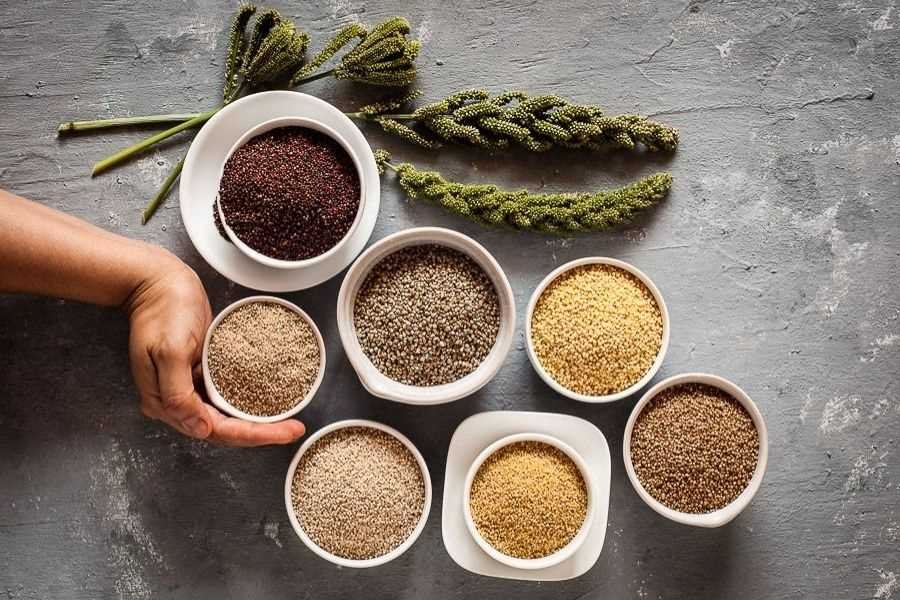
The other day, my Ayurvedic doctor pointed at his breakfast, puffed millets and said, “India was primarily a country of millets and then colonisation happened, food became scarce, famines came and we largely have become dependent on imported wheat.”
For centuries, millets like jowar, bajra, and ragi were the backbone of Indian agriculture and nutrition, drought-resistant, nutrient-rich, and deeply woven into food culture as well as ancient texts. Under British rule, the land was diverted to cash crops like cotton and opium, irrigation favoured rice and wheat, and millets were pushed out and branded as “poor people’s food.” Rice and wheat, once lesser staples, became symbols of status and were embedded into military and school diets.
I slipped into a nostalgic mode, remembering my Aaji (grandmother) who made us bajra bhakri, hot and fresh straight off the fire. We’d drizzle ghee generously, the way only grandmothers let us, and eat it with a simple amaranth leaves dry sabji, paired with a flaxseed, coconut, and peanut chutney. So rich, so filling, yet so light and fresh, so delicious. Maybe I’m biased. There’s something about grandmother’s food, it brings back fond memories…memories of a time when food was real, hot from the pan, eaten with your hands and made with love.
Growing up in a Maharashtrian home, I remember the comfort of bhakri made from jowar, bajra, and nachni (ragi). They weren’t “superfoods”, they were just what we ate, a simple, nourishing, added to a fresh plate full of balanced food, call it Satveek or Sāttvik food. It refers to a quality of purity, balance, and harmony. Sāttvik food is fresh, seasonal, vegetarian, light, and nourishing. Think: fruits, vegetables, whole grains, nuts, milk, and meals made with love.
If you’re like me, eating too many wheat based products doesn’t sit well. My digestion goes off, I feel heavy, and bloated, and it could get worse with stomach pain at times. Not all of us can tolerate gluten. As much as I love the flavour, I have learned to be gentle with my gut. And millets give me that lightness, that feeling of being fed, not just full. Millets are naturally gluten-free.
Even when I was vegan, I’d experiment, jowar and buckwheat flatbreads, tossing proso millet into salads with vinaigrette. I was full of energy that actually lasted through the day. If you want to go back to having a gluten-free meal with soup, salad or rice-based dish merely add or replace it with millet.
Millets Are Making a Comeback — And I’m Here for It!
The rise of “superfoods” is everywhere, especially in the world of fitness. But what’s funny is, our ancestors already knew about them. Amaranth is one of the ancient grains making a comeback, especially among runners and endurance athletes, because it gives long-lasting energy without the crash.
I’ve seen it show up in protein bars, energy powders, even fancy porridge blends—but growing up, amaranth (or rajgira) was just… normal. Aaji would dry roast it, puff it, or cook it into simple sabjis or ladoos. So what makes it so good?
Benefits of Amaranth for Runners (and all of us)
Complete Protein – Contains all 9 essential amino acids
Rich in Iron – Supports oxygen transport and reduces fatigue
High in Magnesium – Relaxes muscles, supports recovery
Slow-Digesting Carbs – Gives sustained energy over long periods
Naturally Gluten-Free – Easy on the gut and anti-inflammatory
You can cook it like porridge, add it to soups, use puffed amaranth in granola, or even eat it as a ladoo (nutriballs) or chikki (nutribars) when you need a quick pick-me-up. Try these gluten-free, grain alternatives for your next meal.
FAQs
1. How do millets taste?
Each millet has a specific taste, some like bajra can be earthy while foxtail can be light, not too overwhelming on the palate. You will need to get used to the texture and taste, try it and keep eating, you will get used to it.
2. Which millet should I eat?
I would suggest these three millets to start with –
Foxtail Millet (Kangni) which is light, fluffy like rice. I love it in pulao or as a rice swap.
Ragi (Nachni) which has an earthy flavour, and is calcium-rich. Great for bones and iron levels especially helpful if you’re anemic or run cold.
Little Millet (Sama) is easy to digest and can be used like couscous or polenta. Great during warmer months.I like it as upma or light khichdi.
3. What are the benefits of millets?
Millets are naturally gluten-free
Low GI — slow, steady energy release
Complex carbs that don’t spike your blood sugar
High in magnesium, iron, B vitamins
They support gut health, hormones, and energy
And honestly, they just feel good
4. How to cook with millets?
Millets are diverse in flavour, texture and nutrients. For this reason, there are numerous dishes you can cook, just be open and creative, millets are giving and you can use them as
Add to soups and stews
Make khichdi or one-pot meals with lentils and veggies
Toss into salads with olive oil + lemon + herbs
Flour for rotis or breads or bhakris
Or even simple puffed millet in the morning with coconut yogurt or fruit
5. Where can I find millets?
You can find millets at Indian, middle-eastern or Asian grocery stores, and health food shops. Farmers’ markets and Ayurvedic clinics may stock them too. Look for varieties like jowar, bajra, ragi, foxtail, or little millet, either whole or as flour according to your recipe of choice.
Community Support: Please buy from local businesses and farmers as much as possible.
Looking for personalised guidance on how to add millets to your nutrition and create a balanced plan? We’re here to help! Reach out to us via Contact Us or WhatsApp for expert coaching and support, and let’s work together to a healthy life filled with vitality!